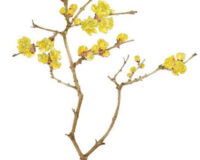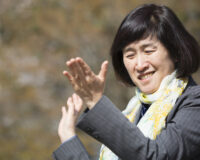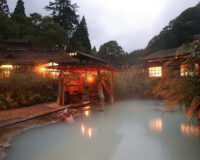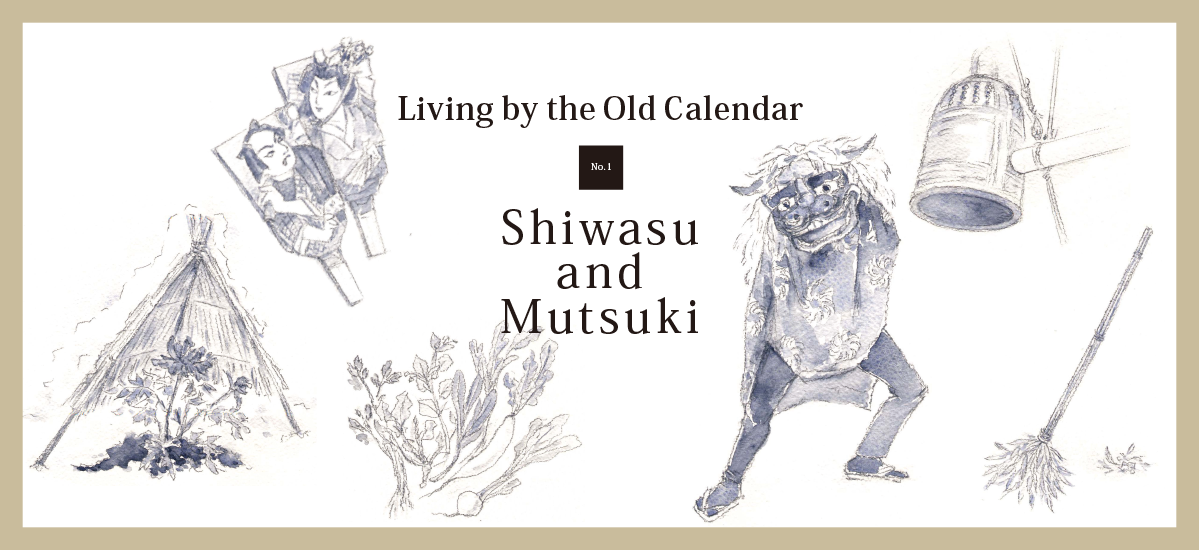

The Meiji Era (1868 – 1912) reforms brought sweeping changes to all aspects of Japanese life, including the 1873 adoption of the Western calendar, which replaced the lunisolar calendar that had accompanied the seasonal rhythms of life in Japan for over a thousand years. While Japan’s old lunisolar calendar, referred to now as the Kyūreki, may not have been a particularly marvellous calendar in itself, having been in use for so many centuries it provides valuable historical information and insights into Japan’s seasonal traditions. Even in our modern daily lives, the knowledge embodied in the Kyūreki continues to be a source of joy and fascination.
Text : 鈴木充広 Michihiro Suzuki / Illustrations : Aso Yuriko / English Version : Judy Evans
Keyword : Year end fairs / Japanese New Year / Kyureki / Shiwasu / Mutsuki / Toshi no ichi / Omisoka / Japanese Calender
The Old Calendar and the New Calendar
Throughout world history, calendars have undergone periodic reform of one kind or another, generally with the aim of improving their accuracy. Small changes to systems used to determine, for instance, the length of the calendar year can rightly be called “reforms” and these had occurred at intervals in Japan ever since the adoption of the lunisolar calendar in the 7th century. However, what happened to the Japanese calendar during the Meiji Calendar Reform of 1873, rather than being just a calendar reform, was more a case of “out with the old, in with the new”. In this so-called reform, the lunisolar Tenpō Calendar was entirely abandoned and replaced by the Gregorian Calendar.
For the purpose of this series, I shall be referring to the pre-1873 lunisolar calendar system as the “Kyūreki” or “old calendar”, and the Gregorian Calendar as the “Western calendar” or “new calendar”.
What was the Kyūreki Like?
I intend to deal with the Kyūreki itself in more detail in future articles, so will begin here with a broad outline of the three types of calendar; solar, lunar and lunisolar. A lunisolar calendar such as Japan’s old calendar, the Kyūreki, combines two systems of reckoning: the lunar calendar system which synchronises its cycles with the phases of the moon, and the solar calendar system, based on the position and apparent movement of the sun.
Given that the Kyūreki combines both lunar and solar calendar systems, it is tempting to assume that this must have made it an excellent calendar. However, this wasn’t the case. Rather than combining just the best features of each system and leaving out the problematic aspects, the attempt to combine two separate systems into one ended up creating a whole new set of problems. However, the Kyūreki had been in use in Japan for a period of more than a millennium, spanning much of Japan’s recorded pre-modern history, meaning that a good understanding of the old calendar is essential when examining Japan’s historical record and past traditions.
There’s more to a calendar, by the way, than just the repeated cycle of days and weeks. A calendar is primarily a way to identify and describe specific points in time, such as the dates of significant past, present and future events. The convenience of having the days, weeks or months set out for us, then, is really a secondary feature.
Shiwasu – The Twelfth Month
Although the months in Japan’s new calendar are numbered in order from one through twelve (rather than each month having its own name as is the custom in the West), each month in the old Japanese calendar had a name that related to seasonal conditions. Shiwasu, “Month of Priests Running”, was the name of the twelfth month. If even the dignified priests were busy enough to be running about getting ready for the new year, this final month of the year must have been a hectic time indeed. In contrast, the first month of the new year was called Mutsuki, “Month of Harmony”.
Preparing for the New Year
Preparations for the New Year would begin on the 13th day of the final month of the year. During the Edo Period (1603 – 1868), this day came to be known as “Kishukunichi”, or “Day of the Ghost”, and was considered a highly auspicious day for everything but weddings. This is when susuharai (getting rid of the year’s soot and dust) was carried out at Edo Castle in preparation to greet the gods of the new year, a custom that spread throughout the population and is still followed today. Beginning with susuharai on the 13th, New Year’s preparations continue for the rest of the month as sticky mochi rice is pounded for rice cakes, decorations are placed in the tokonoma alcove, pine sprigs and other material for New Year’s decorations are gathered, and special osechi dishes are prepared.

Toshi no Ichi – Year-End Fairs
Toshi no ichi, or year-end fairs, are open-air markets held during the final month of the year. Stalls sell all sorts of products, ranging from ordinary household goods to special New Year’s decorations and lucky charms. These year-end fairs are held throughout Japan and some are quite specialised in the wares they sell. One such specialist year-end fair in Tōkyo is the popular Hagoita Ichi held every year at Asakusa’s Sensōji Temple from December 17th to 19th. Here customers can browse at dozens of stalls selling all kinds of hagoita, rectangular wooden paddles originally used to play hanetsuki, a game similar to badminton. However, the hagoita on display here are highly decorative and regarded as lucky objects that can be used to bat away misfortune.
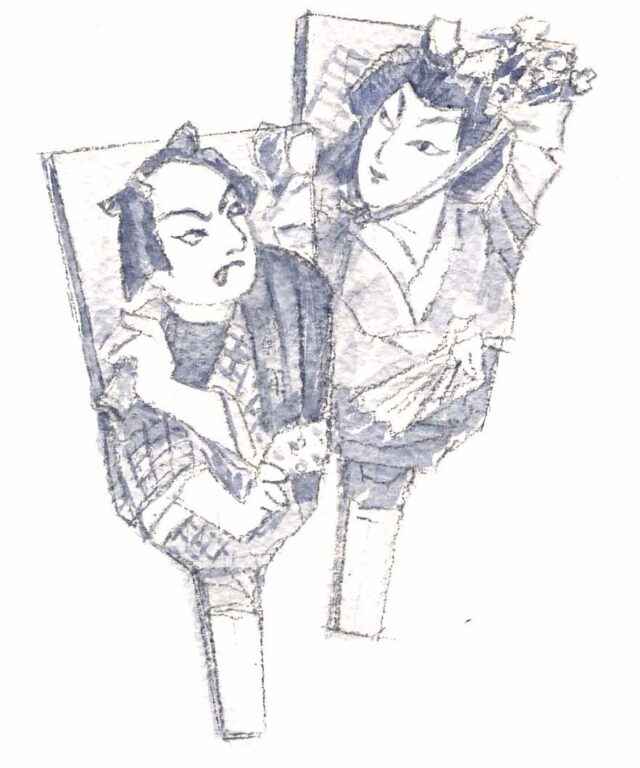
Ōmisoka – New Year’s Eve
The last day of the month is known as “Misoka”, written with the kanji 晦日. An alternative term is “Tsugomori”, which relates to the fact that in the old calendar the end of the month was when the moon could no longer be seen in the night sky. “Tsugomori” is thought to be an altered pronunciation of the term “Tsuki-komori” (月隠り), meaning “hiding moon”. Since New Year’s Eve is not only the last day of the month but also the last of the year, the kanji 大 meaning “big” is added to 晦日 (Misoka), giving us 大晦日 (Ōmisoka), the last day of the year. Once upon a time, people would follow the New Year’s Eve custom of toshigomori (歳籠), shutting themselves inside the house or in a shrine and staying awake all night in order to welcome the deity Toshigami, who was believed to visit households on New Year’s Day, particularly coming to those who had sat up waiting throughout the dark, moonless night. With Toshigami’s visit, the New Year would begin.
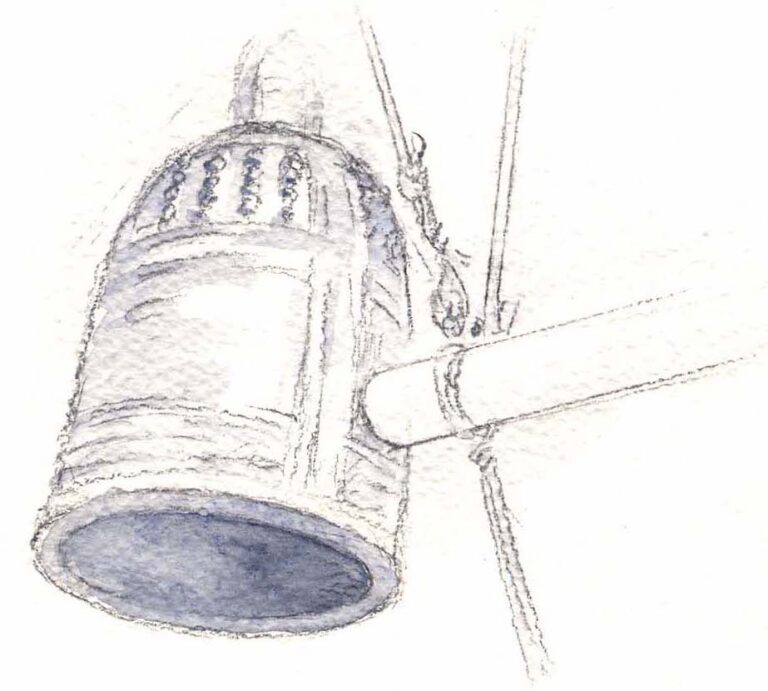
Mutsuki – The First Month
The Japanese word for New Year’s Day is “Ganjitsu” (元日), while the morning of New Year’s Day is referred to as “Gantan” (元旦). Being the first morning of both the first month and the new year, Gantan is a highly auspicious morning when many people will head out to visit power spots in the mountains or on the coast, or pay their respects at temples and shrines. People even seek to gain strength from the new year’s sun by praying before the kanji 旦, which depicts the sun rising above the horizon.
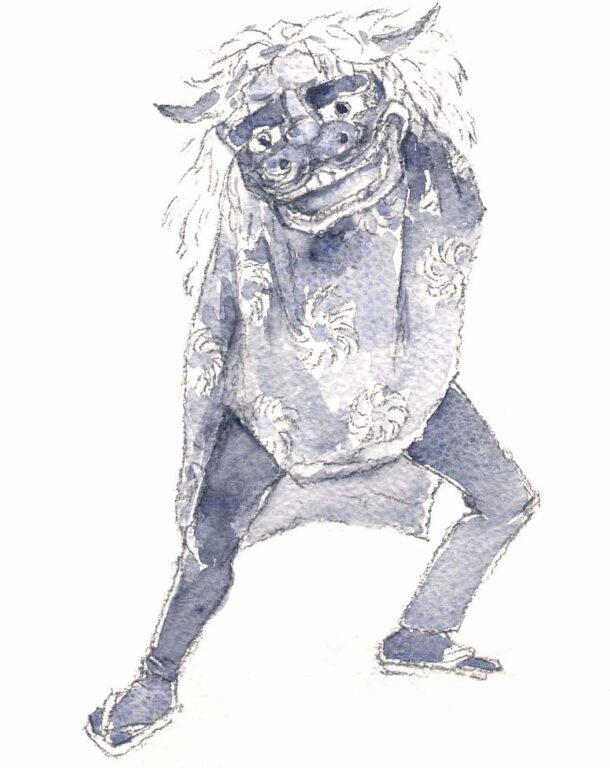
Haru no Nanakusa – The Seven Herbs of Spring
Jinjitsu no Sekku, the first of the five seasonal gosekku festivals that take place throughout the year, occurs on the seventh day of the year. The festival is also known as Nanakusa no Sekku. In the morning, people eat rice porridge containing the seven herbs of spring (nanakusa) – seri (Japanese parsley), nazuna (shepherd’s purse), ogyō (cudweed), hakobera (chickweed), hotoke-no-za (dead-nettle), suzuna (turnip) and suzushiro (daikon radish) – to wish for good health. However, January 7th, the seventh day of the year according to the new calendar, is rather too early in the year to be able to gather these seasonal outdoor vegetables. According to the old Kyūreki calendar though, Nanakusa no Sekku falls in February, which makes far more sense.
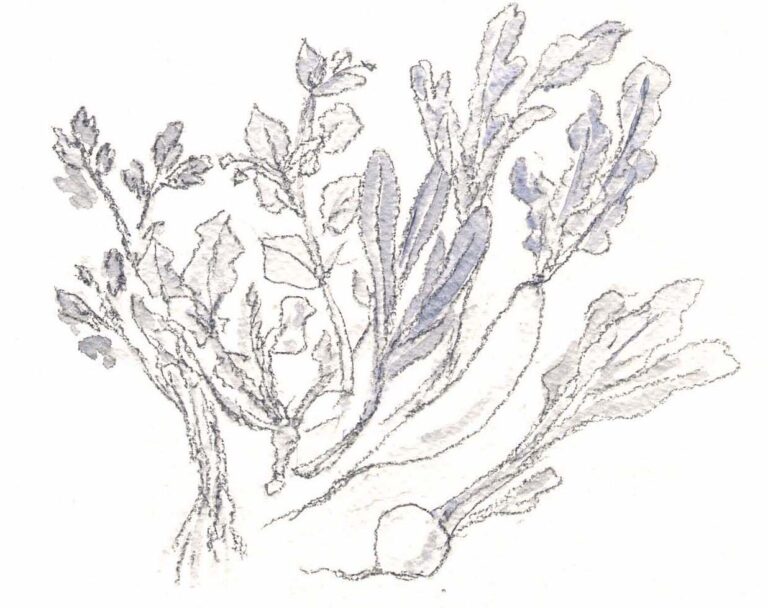
Kanchū – Midwinter
The coldest time of the year is known as Kanchū (寒中) or Kan-no-uchi (寒の内). This midwinter period begins with Shōkan (小寒 minor cold) on January 5th and lasts until Daikan (大寒 major cold) on February 3rd. The beginning of Kanchū is referred to as Kan-no-iri (寒の入り) or “entering the cold”. Kanchū is a time when people all over Japan perform outdoor rites such as hadashi-mairi (barefoot pilgrimages), kangori (outdoor ablutions in freezing water) or kangeiko (martial arts drills barefoot in the snow or in freezing water). And while Kanchū is certainly the coldest time of the year, it also means that spring is just around the corner.




